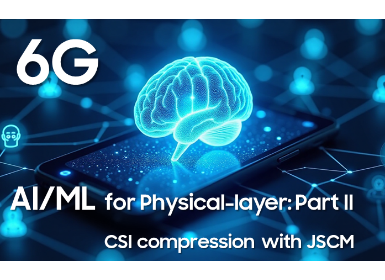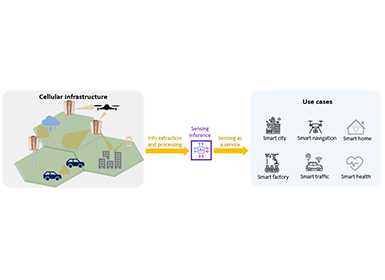Communications
Realizing High Power Full Duplex in Millimeter Wave System: Design, Prototype and Results
Background
In-band full duplex (FD), providing simultaneous uplink and downlink on the same spectrum, is of great interest for vendors and operators in industry recently. For full duplex, its advantages over conventional time division duplex (TDD) include doubling spectrum utilization efficiency, reducing bi-directional communication latency, and increasing coverage with more time resources opportunities available for repetition. Nevertheless, reaping these aforementioned merits is still challenging due to the well-known difficulty of effectively mitigating the intrinsic self-interference (SI) from co-site transmission (TX) to reception (RX). FD operation attracted much interest to realize its benefit with the integrated access and backhaul (IAB) that was standardized to enhance the coverage of mmW band system without requesting additional spectrum. This blog presents the design principle and validation of a practical SI cancellation (SIC) technique in the case of high transmission power class in mmW-based IAB networks.
High Power Full Duplex Transceiver Design Principles

Figure 1. Schematic diagram of HPFD SIC transceiver
Modern wireless networks are typically operated in either a TDD or frequency division duplex (FDD) mode. In order to operate FD at the base stations with high transmission power comparable to the existing wireless networks, it is essential to remove the SI so that the residual SI is at the level of the noise floor. This requirement imposes a very high level of implementation challenges. To tackle the SIC implementation challenge with high power full duplex (HPFD) operation, we proposed a SIC transceiver design as shown in Fig. 1, based on a joint SIC framework across multiple domains. Our design principle is to leverage the SIC in both antenna and radio frequency (RF) domains on an as-needed basis to mitigate strong SI. The residual SI is then reduced to the noise floor level through the use of non-linear digital SIC.
The strong SI from TX-beam to RX-beam, including TX noise, is firstly mitigated by isolating the TX and RX antenna pairs via a well-designed structure, e.g. corrugated surface consisting of multiple metallic walls. Then, an RF-SIC with analog filter is used to further cancel out SI. It is worth to note that this RF-SIC may be activated or deactivated depending on the RX signal dynamic range and the received SI power, which is controlled by a feedback signal from a power detector. Lastly, a digital SIC is performed per beam port, to avoid the existence of significant residual interference that may prevent the demodulation of high-order modulation schemes such as the typical 64 QAM for IAB links. This requires the synchronization of SI signal, estimation of the SI channel, reconstruction of SI, and finally, subtracting SI from the baseband signal.
High Power Full Duplex Prototyping and Experimental Results

Figure 2. Components for mmW full duplex PoC (a) Radio unit at gNB-AU (b) Radio unit at IAB-MT (c) Corrugated surface
To verify the feasibility of the proposed hybrid SIC technique in HPFD, we developed and implemented a hardware prototype testbed to assess the performance of HPFD with regards to its SIC capability and block error rate (BLER). This testbed is implemented in the scenario of mmW-based IAB that consists of a gNB access unit (gNB-AU) and an IAB mobile terminal (IAB-MT) to represent an IAB node, which are built in accordance with 5G NR IAB specifications. The proposed hybrid SIC technique is implemented in both gNB-AU and IAB-MT. Figs. 2-(a) and 2-(b) show the radio units of gNB-AU and IAB-MT, respectively, where the corrugated surface for antenna SIC is applied between TX and RX antennas in each side. Fig. 2-(c) shows the corrugated surface, which consists of several metallic chock walls. The well-designed corrugated surface provides sufficient passive isolation to eliminate the near-field coupling SI with minimized effect on antenna radiation patterns. The RF-SIC module is placed between the output of RX antenna and the input of low noise amplifier (LNA). The digital SIC is implemented using a field programmable gate array (FPGA), which is integrated together with an analog-to-digital converter (ADC) and a digital-to-analog converter (DAC) on a signal processing board.

Figure 3. HPFD field test scenario, highlighting 0% BLER and 2X data rate in a reflective test scenario with rich environment clutters

Figure 4. Performance of SIC (a) Snapshot for 1T1R case (b) R-INR performance
Field test has been carried out in an outdoor reflective test scenario with rich environment clutters, as shown in Fig. 3. It should be noted that RF-SIC is turned off for the outdoor field test to prove the possibility of removing RF-SIC for mmW HPFD. The TX power per port is set to 30 dBm.
As shown in Fig. 3, 0% BLER performance can be achieved in the tested scenario, which demonstrates an error-free HPFD communication. Even though there is a residual SI after the digital SIC, it does not impact the performance of the highest MCS demodulation used in the test scenario, leading to doubled throughput compared with that of TDD. Meanwhile, Fig. 4 shows SIC performance, demonstrating that after SIC, low residual interference plus noise-to-noise ratio (R-INR) can be achieved. In Fig. 4-(a), a snapshot from the outdoor testing provides validation for the case of one TX antenna and one RX antenna (1T1R). In the 1T1R case, the R-INR was as low as 1.73 dB, meaning that the residual SI after SIC was lower than the noise floor. Fig. 4-(b) shows the varying trend of R-INR along time for both 1T1R and 2T2R cases. For the former, the R-INR is usually lower than 2 dB with an average of 1.8 dB, while for the latter, the R-INR ranges between 3.8 dB and 4.4 dB with an average of 4 dB. This difference in R-INR can be attributed to the 3 dB increase of the total transmit power in the 2T2R test and the residual SI accumulation from 2 TX beams after SIC per RX beam port. This 2 dB increase in R-INR does not prevent from reaping FD gain as it further creates double the amount of resources for data transmission.
System Level Simulation Result
To confirm the practical gain of full duplex over TDD in a multi-cell IAB network, we performed system level simulation (SLS) according to 3GPP IAB evaluation methodology and assumptions, considering all interference types, including cross-link interference (CLI). The simulation results are shown in Fig. 5. From Fig. 5, it can be observed that FD operation still achieves 84% or 79% throughput gain over TDD operation in average assuming MCS up to 64QAM with 0.93 coding rate or 256QAM with 0.93 coding rate respectively. Such results verify the potential gain of full duplex in a realistic environment.

Figure 5. SLS evaluation results (a) Average cell throughput (b) FD throughput gain over TDD
Conclusions
In this blog, we presented a hybrid SIC approach combining antenna, RF, and digital domain techniques to eliminate the SI. The approach utilizes a well-designed corrugated surface for TX-RX separation in antenna domain, followed by a digital SIC scheme featuring PA non-linearity compensation. To validate the SIC capability of the proposed approach, a prototype testbed compliant with 3GPP NR IAB specifications was built and tested in a mmW-based IAB environment that operates at a high transmission power class. The test results showed that our SIC transceiver could reduce R-INR to an average of as low as 1.8 dB in 1T1R case, indicating a residual SI lower than the noise floor. This demonstrated the high implementability and effectiveness of HPFD in mmW-based IAB networks.






